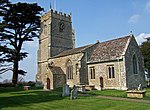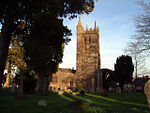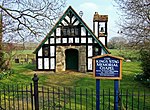Caundle Brook
Rivers of Dorset

Caundle Brook is a 13.4 miles (21.6 km) tributary of the River Lydden that flows through Blackmore Vale in Dorset, England.Its headwaters rise at the foot of Dogbury Hill near Cosmore. The brook then flows in a northerly direction past the villages of Middlemarsh and Tiley until it collects The Cam and a second tributary that drains Caundle Marsh. Here it turns east, and is then crossed by Cornford Bridge and then the A3030 near Bishop's Caundle. It continues past Rowden Mill south of Stourton Caundle before being crossed by the A357 at Warr Bridge, beyond which it joins the Lydden near Lydlinch.
Excerpt from the Wikipedia article Caundle Brook (License: CC BY-SA 3.0, Authors, Images).Caundle Brook
A357,
Geographical coordinates (GPS) Address Nearby Places Show on map
Geographical coordinates (GPS)
| Latitude | Longitude |
|---|---|
| N 50.9281 ° | E -2.3603 ° |
Address
A357
DT10 2QJ , Lydlinch
England, United Kingdom
Open on Google Maps









